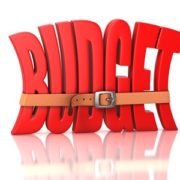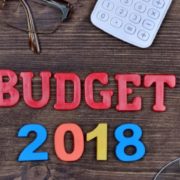Ever wonder where your money goes?
 It doesn’t matter how much money you have or make, sometimes it just doesn’t feel like it’s enough. When you create and stick to a budget, at least you know how much you actually have and what you can do to make the best of it.
It doesn’t matter how much money you have or make, sometimes it just doesn’t feel like it’s enough. When you create and stick to a budget, at least you know how much you actually have and what you can do to make the best of it.
Budgeting shows you where you are financially, and helps you map out a path to where you want to be.
By creating a budget and setting aside a few minutes a week to keep track of your money, you will be able to:
- Make informed decisions about what to do with your money
- Figure out what changes you should make in your spending habits
- Start getting into good saving habits.
Step 1 – Track what is coming in and out
The first thing to do is figure out what money you have and where it goes. Try to keep a diary of your expenses and your spending for a couple months. This will enable you to calculate where your money is and how much spare cash you have after everything is paid.
Make a list of all the regular expenses you have such as credit card bills, rent or mortgage payments and grocery bills. Don’t forget items that pop up unexpectedly such as holidays, birthdays or insurance premiums.
Step 2 – Manage your budget
Regardless of whether your budget is in the red or in the black there are things you can do to be thriftier. Some easy ways to reduce your spending are:
- Find small, non-essential items you can cut back on.
- Are there any direct debit payments which are being paid without you actually using the service? This could be an old internet provider or a gym you don’t go to any more.
- Can you get a better deal on your services? Sometimes switching your phone, mobile, gas or electricity can provide you substantial savings, it helps to look at all your options.
- Can you pay more than the minimum on your debts? Whether it’s personal loans or credit cards, paying the minimum will hardly make a dent as you will only be paying off the interest.
Whatever happens, don’t ignore the problems. By being open and honest about your financial difficulties with me, we can look at solutions to help you out.
Step 3 – Make goals and stick to them
It is time to get your money to work for you by making financial goals:
- Short term goals – make them achievable in a realistic timeframe. They could be as simple as paying off your credit card or saving up for a family holiday. Make sure you reward yourself when you have achieved them.
- Long term goals – these can be harder to achieve as they seem so far away, but look at goals such as saving for a deposit, paying off your mortgage quicker or saving for your retirement.
- Expect the unexpected – it is a good idea to put some money aside for emergencies or unexpected events. You could aim to save enough to cover the cost of replacing an expensive household item, but a lot of people aim to have three months’ pay saved up.
Once your goals are made, stick to them. But don’t beat yourself up if you slip up for a month or two; simply reassess your goals and get back to them.
Step 4 – Speak to a professional
We are here to help. If you feel that you are in over your head and or just want to get a step up with your finances, make an appointment today and we can help you create a financial strategy that will help you achieve your financial goals.
Source | IOOF









